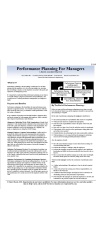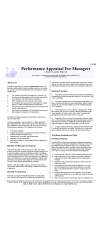Using The CARP System To Manage Conflict Constructively – Part III (Problem-Solving) By Robert Bacal
Editor’s Note. This is part of a three part series. To view parts one and two, click the links at the bottom of the article.
In the first two parts of this article, we outlined the CARP system, and covered Control and Acknowledgement. Now, we’ll finish off the series by addressing Refocus and Problem-Solve.
To view the other parts of the article go to http://conflict911.com/conflictarticles/carp1.htm and http://conflict911.com/conflictarticles/carp2.htm
R is For Refocus
When we are involved in conflict our desire should be to solve the actual presenting conflict issue (that’s what the conflict is actually about). We use Control and Acknowledgement techniques to reduce the emotions attached to the conflict (see previous parts of this article), but we do so to get to the point where we can actually get to the problem-solving stage.
Refocusing the discussion involves moving it away from focusing on the emotions and returning back to the conflict issue. It’s a transitional phase of the process that bridges between handling the emotional part of the conflict to handling the actual substantive conflict issue.
What we want to do is leave behind the aggression.
Refocusing is easy and is usually done once emotions are lessening. It can be as simple as saying: “OK, well let’s see if we can get back to the initial issue here”, or “I’m sure you want to resolve this as much as I do. Can I ask you a few questions to see what we can work out?”, or “I know your time is valuable, so maybe we can see how we might resolve this?”
Once the other person agrees to move on, then the next step is “P”, for problem-solving.
P is For Problem-Solving
Problem-solving is the last step of the conflict management approach. It’s the LAST step for a very good reason. When people are angry, upset, or aggressive they are not ready or even able to think clearly enough to solve the actual problem. If you try to problem-solve with an angry person, most likely little listening will occur, and the process will get more and more frustrating.
The basis rule here is that problem-solving can only work once both parties are calm enough to step back from the emotions, and when they are ready to work together to solve the issue.
Problem solving within the model involves exchanging information, and trying to identify the exact problem, and what both parties need and want regarding the problem issue. So, you may ask questions to determine where the other person is coming from. You may present your own needs and wants, while trying to understand the other’s. Ultimately, both parties should be coming up with suggestions for solutions to the actual problem.
So, here’s a summary.
In order to address a conflict, you need to
1) Maintain self-control
2) Exert enough control over the conversation to guide it into a constructive path
3) Acknowledge the other person emotionally and factually to lower the emotional levels.
4) Refocus away from the emotions and back to the problem issue.
5) Use problem-solving techniques to address the root or presenting conflict issue.
The TIMING is absolutely critical. Move to problem-solving too quickly and it’s likely the conflict interaction will worsen. Get the timing and sequencing right and you can save a lot of grief.





